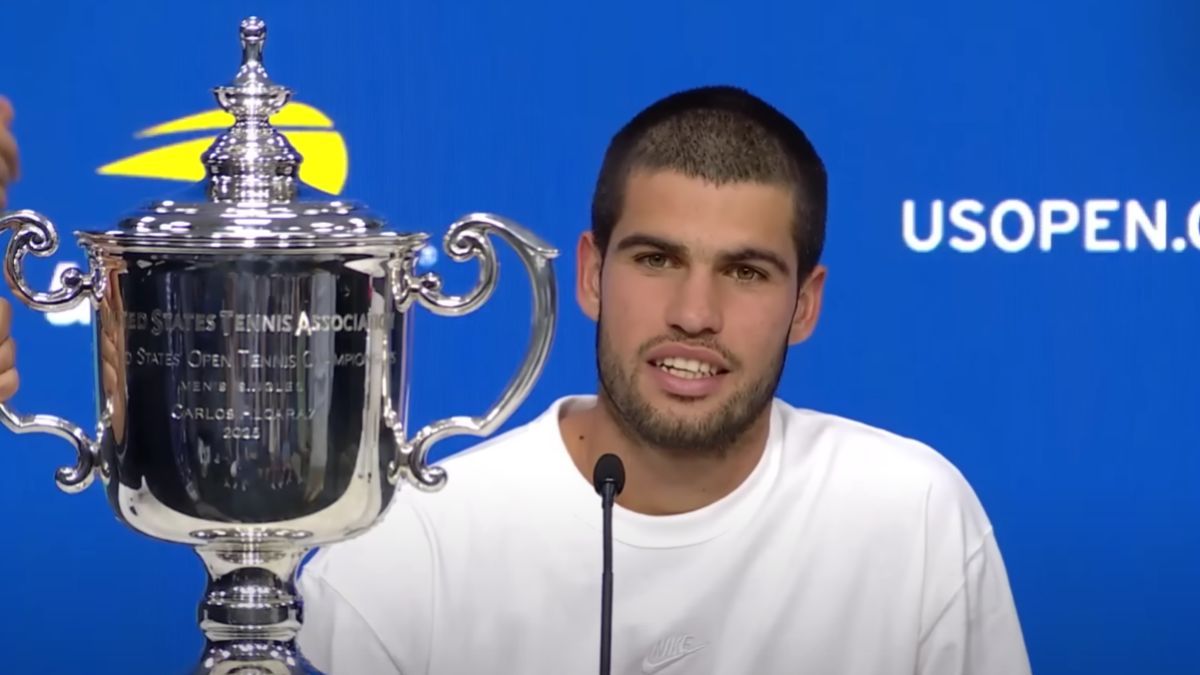At just 22, Carlos Alcaraz is already a tennis phenom with multiple Grand Slam titles, but his financial moves may be what set him apart even more. Because while most young athletes focus purely on performance, Alcaraz seems to be building an off-court strategy that’s equally strong—endorsement deals, brand visibility, and income streams that look well diversified. If he maintains this path, he might not only dominate tennis but also the business side of sports. For fans, young athletes, or anyone interested in smart money, there’s a benefit in seeing what Alcaraz is doing that others aren’t. Here’s how he stacks up, what seems smart, and what the risks are.
Prize Money Versus Endorsement Power
View this post on Instagram
One of the first signs of financial savvy in Carlos Alcaraz is how much he earns from sponsors compared to what he wins on court. In 2024, Alcaraz reportedly earned $42.3 million, but only about $10.3 million of that came from prize money; the rest came from endorsement and sponsorship deals. That ratio shows that he isn’t relying just on match wins—he’s leveraging brand power for stability and income. Many athletes at his level still depend mostly on tournament earnings, which fluctuate with performance and injuries. Alcaraz, however, seems to be building a financial buffer via non-play revenue, which is a hallmark of long-term financial planning.
Smart Brand Alignments
Another indicator of savvy is what companies Alcaraz partners with, not just how many. He has deals with big names like Nike, Rolex, Louis Vuitton, BMW, Babolat, and several lifestyle and consumer brands. These are luxury or high-visibility brands, which tend to pay more and expect visibility, prestige, and a stable reputation in return. Alcaraz seems to choose brands that align with a clean public image and global appeal—this increases his leverage. Also, his brand deals appear to be long-term or multi-year, reducing the risk that comes from one-off deals. That kind of cautious choice often distinguishes athletes who maximize financial earnings across a long career from those who burn bright but fizzle out.
Leveraging Popularity & Media Presence
Off the court, Alcaraz has been growing his social media following, media appearances, and global visibility, which boosts his earning potential. For example, his partnerships are more than logos—they often involve marketing campaigns, visibility in high-impact events, and sometimes exclusivity provisions (where his image or uniforms/promos are everywhere). That media multiplier effect—where every win, every appearance, every video gets amplified—is valuable to sponsors. It suggests Alcaraz understands that his brand is not just tennis skill, but public persona—and that investing in visibility can return dividends. Many athletes under-25 don’t treat media presence this strategically—it seems Alcaraz is doing that.
Diversification & Long-Term Investments
Financial prudence often comes from not putting all your eggs in one basket, and Alcaraz seems to show signs of that. Reports indicate he is investing in real estate (homes in his native Spain and elsewhere) and making moves to build asset stability. Also, his endorsement income gives him freedom beyond performance; injuries, losses, or upsets won’t cut all his income immediately. He’s young enough to take some risks, but already making moves that protect his future. For example, brand deals that last many years, high-visibility contracts, and property holdings—these are ways to lock in value. Those are traits often seen not just in good athletes, but good financial managers.
Risks, Challenges, and What Could Go Wrong
View this post on Instagram
Even with all this, being “financially savvy” isn’t guaranteed forever; many things can go wrong. Alcaraz relies on physical performance: injury, loss of form, or burnout could reduce his ability to earn prize money or maintain sponsor appeal. Also, fame comes with scrutiny—if any scandal or negative publicity arises, even if unfair, it could damage some deals. Luxury brand endorsements can sometimes become volatile—companies might cut budgets, shift their marketing focuses, or be affected by macroeconomic downturns. Tax, lifestyle expenses, management fees, and investment risks also eat into gross earnings; how prudently Alcaraz manages those will matter a lot. So while many early signs point to financial wisdom, execution over time will test how savvy the strategy truly is.
What We Learn if He’s Doing It Right
If Carlos Alcaraz is as financially savvy as he appears, it means several truths about sports careers today: that off-court income matters just as much as wins, that athlete branding is more about consistency and visibility than just performance, and that young stars who plan ahead set themselves apart. For fans or aspiring athletes, the big takeaway is that performance is foundational—but without smart brand deals, diversified income, and long-term investments, even great players can lose ground. Alcaraz seems to understand that. If he continues on this trajectory—keeping endorsements strong, staying healthy, maintaining visibility—he might not just be one of the best tennis players, but also one of the most financially solid young athletes in sports history.
Do you think Carlos Alcaraz could become the model for how young athletes balance financial success and athletic greatness? Or do you see someone else doing it more impressively? Share your thoughts and comparisons in the comments!
You May Also Like
- Is Allen Iverson’s Comeback the Greatest Net Worth Redemption Story Ever?
- Is Roger Federer A Billionaire? Here’s His Net Worth
- 6 Athletes Who Built More Than Just a Legacy—They Built Fortunes
- 10 Surprising Athletes Worth Over $40 Million
- 5 Rising Tennis Stars Turning Prizes Into Power

Amanda Blankenship is the Chief Editor for District Media. She frequently writes for a handful of blogs and loves to share her own personal finance story with others. When she isn’t typing away at her desk, she enjoys spending time with her daughter, son, husband, and dog. During her free time, you’re likely to find her with her nose in a book, hiking, or playing RPG video games.


